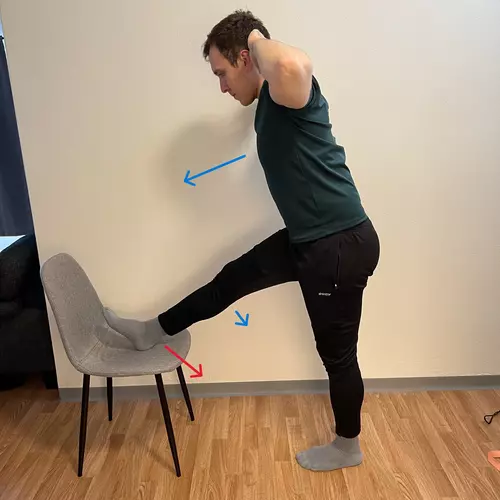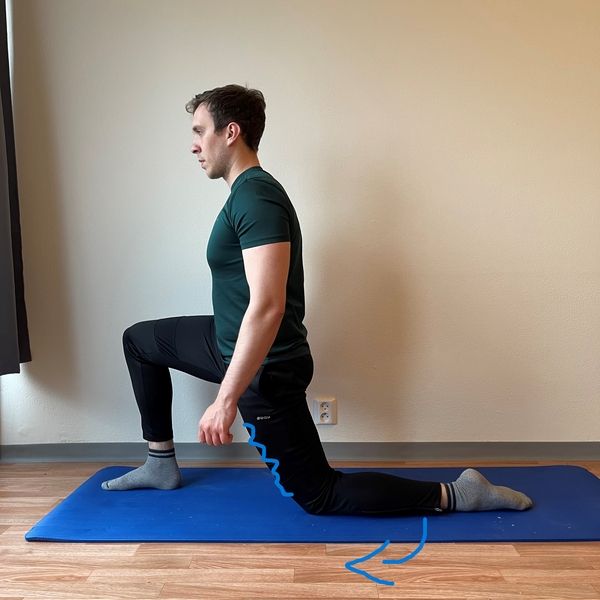PNF Stretching: The Ultimate Guide for Physical Therapists and Stretching Lovers
What is Proprioceptive Neuromuscular Facilitation (PNF) Stretching?
As a physical therapist or stretching enthusiast, you may have heard of PNF stretching.
PNF stretching stands for proprioceptive neuromuscular facilitation, which is a technique used to improve flexibility, strength, and range of motion.
In this article, I will cover everything you need to know about PNF stretching, its benefits, how it works, stretching examples and best pnf stretching books.
Definition of PNF Stretching: PNF stretching is a technique that involves a combination of stretching and contracting muscle groups to improve range of motion.
The technique is based on the principles of neuromuscular facilitation, which is the process of enhancing the communication between the brain and the muscles.
List Of PNF Stretching Techniques
Hold-Relax Technique (HR)
The Hold-Relax technique is one of the most common types of PNF stretching.
This technique involves stretching the targeted muscle for a few seconds, then contracting it for five to ten seconds, followed by a relaxed stretch for ten to fifteen seconds.
The contraction phase activates the Golgi tendon organs, which then cause the muscle to relax and lengthen.
Contract-Relax Technique (CR)
The Contract-Relax technique is similar to the Hold-Relax technique, but it involves contracting the muscle first before stretching it.
In this technique, the therapist will ask the patient to contract the targeted muscle against resistance, followed by a relaxed stretch for ten to fifteen seconds.
This technique helps to improve the muscle’s ability to contract and relax, which can lead to an increased range of motion.
Hold-Relax-Contract (HRC)
The hold-relax-contract technique involves a combination of both the HR and CR techniques.
The client will first contract the muscle group, followed by a passive stretch, then hold the stretch, and finally contract the muscle group again.
This technique enhances muscle strength and flexibility.
Contract-Relax-Antagonist-Contract (CRAC)
The CRAC technique involves the client contracting the targeted muscle group and then relaxing into a passive stretch.
The therapist then resists the client’s movement while asking them to contract the antagonist muscle group.
This technique is effective in improving range of motion and decreasing muscle imbalances.
Hold-Relax-Swing (HRS)
The hold-relax-swing technique involves a combination of the HR and rhythmic initiation techniques.
The client first contracts the targeted muscle group, holds the stretch, and then swings the limb back and forth within the passive range of motion.
This technique enhances mobility and coordination.
How Does PNF Stretching Work?
PNF or Proprioceptive Neuromuscular Facilitation is a technique that uses the natural reflexes of the body to enhance flexibility and strength.
It involves the combination of isometric and isotonic contractions and relaxation to target specific muscle groups.
PNF stretching works on four main mechanisms: autogenic inhibition, reciprocal inhibition, stress relaxation, and gate control theory. Let’s explore each one of them in detail.
Autogenic Inhibition
The first mechanism of PNF stretching is autogenic inhibition.
It is a natural process that occurs when the muscle spindle senses tension in the muscle.
The muscle spindle is a sensory receptor that detects changes in the muscle’s length and velocity.
When a muscle is stretched, the muscle spindle sends a signal to the spinal cord, which then triggers a reflex response to relax the muscle. This reflex is called the stretch reflex.
During PNF stretching, the muscle is contracted before it is stretched, which activates the Golgi tendon organ, which is responsible for sending a signal to the spinal cord to inhibit the stretch reflex.
As a result, the muscle is allowed to relax further, leading to increased flexibility and range of motion.
Reciprocal Inhibition
The second mechanism of PNF stretching is reciprocal inhibition.
It is a reflex that occurs when one muscle contracts, and the opposing muscle relaxes.
During PNF stretching, the target muscle is contracted isometrically, while the opposing muscle group is relaxed.
This technique helps to stretch the target muscle while reducing tension in the opposing muscle. For example, during a hamstring stretch, the quadriceps are relaxed to allow the hamstrings to stretch further.
Stress Relaxation
The third mechanism of PNF stretching is stress relaxation.
It is a natural process that occurs when a muscle is held in a stretched position for an extended period.
During this time, the muscle fibers gradually adapt to the new length, reducing the tension in the muscle. This mechanism is particularly useful for individuals with chronic muscle tightness.
PNF stretching utilizes this mechanism by holding the stretch for a longer duration, which allows the muscle to adapt to the new length and reduce tension.
Gate Control Theory
The fourth mechanism of PNF stretching is gate control Theory.
It is a theory that explains how the nervous system processes pain signals.
According to this theory, the spinal cord acts as a gatekeeper that controls the flow of pain signals to the brain. When the gate is closed, the pain signals are blocked, and the individual experiences less pain.
During PNF stretching, the sensory nerves in the muscle are stimulated, which activates the gate mechanism, blocking pain signals from reaching the brain.
PNF Stretching Exercises
You can perform pnf stretches in two different ways.
- Alone
- With a partner
When performing those stretches alone, you might need some simple stretching equipment such as a stretching strap.
PNF stretching with a partner require that you find an experienced physical therapist specializing in this technique.
Let me show you some PNF stretching examples you can implement in your routine today.
PNF Stretching Examples You Can Do Alone
Start from a standing position. Place one foot on a chair and your hands behind your head.
Contract phase: Push downward with your foot on a chair. (red arrow). Hold for 6s.
Stretching phase: Lean forward with your upper body and push downward with your knee. (blue arrows). Hold for 15.
Repeat the process five times, each time going into deeper and deeper stretch.
PNF Stretching for Psoas
Start from a one-leg kneeling stance.
Contract phase: Push the floor with your lower leg and push with your knee forward (imitating the hip flexion). Hold for 6s.
Stretching phase: Lean forward with your upper body pushing your hip into extension. Hold for 15.
Repeat the process five times, each time going into a deeper and deeper stretch.
Best PNF Stretching Books
Here you can find the 2 best books about pnf stretching. You can read them if you want to go deeper into this subject. Additionally, you can read the books on stretching and flexibility I highly recommend everyone should read.
Excellent book for learning the basics of PNF stretching techniques.
Here you can also learn some basic stretches for lower back and shoulders.
This book contains 67 pages and is easy to read.
This book will provide you with everything you need to know about pnf stretching to become an expert in this field.
- 650 photos
- fully illustrated guides
- learn how to evaluate and treat patients
- recommended for physical therapist
Benefits of PNF Stretching
- Increased Flexibility: PNF stretching can help you achieve a greater range of motion and improve your flexibility. By using isometric contractions to stretch your muscles, you can achieve a deeper stretch than with passive stretching alone.
- Improved Performance: By improving your range of motion and flexibility, PNF stretching can also improve your athletic performance. Whether you’re a runner, weightlifter, or gymnast, PNF stretching can help you achieve your goals.
- Reduced Risk of Injury: By increasing your flexibility, PNF stretching can also reduce your risk of injury. Tight muscles are more prone to injury, and PNF stretching can help to loosen them up.
- Improved Muscle Activation: PNF stretching can also help to improve muscle activation. By using isometric contractions, you can activate more muscle fibers, resulting in improved muscle tone and strength.
- Minimal Equipment Required: PNF stretching requires minimal equipment, making it an easy and accessible technique to incorporate into your fitness routine. All you need is a partner or a stretching strap to assist with the stretches.
Precaution Measures for PNF Stretching
To minimize the risks associated with PNF stretching, here are some precautionary measures that you should take:
- Start Slowly: Begin with gentle stretches and gradually increase the intensity and duration of the stretches over time.
- Proper Technique: Ensure that you are performing PNF stretching with proper technique, with the help of a partner or a therapist.
- Do Not Overstretch: Avoid overstretching, as it can lead to muscle and joint injuries.
- Avoid Fatigue: Do not perform PNF stretching when the muscles are already fatigued, as this can increase the risk of muscle soreness and injury.
- Use Stable Surfaces: Use stable surfaces, such as a yoga mat or a padded floor, to perform PNF stretching.
- Be Aware of Medical Conditions: If you have any medical conditions that can affect your ability to perform PNF stretching, consult your physician or physical therapist before attempting the stretches.







